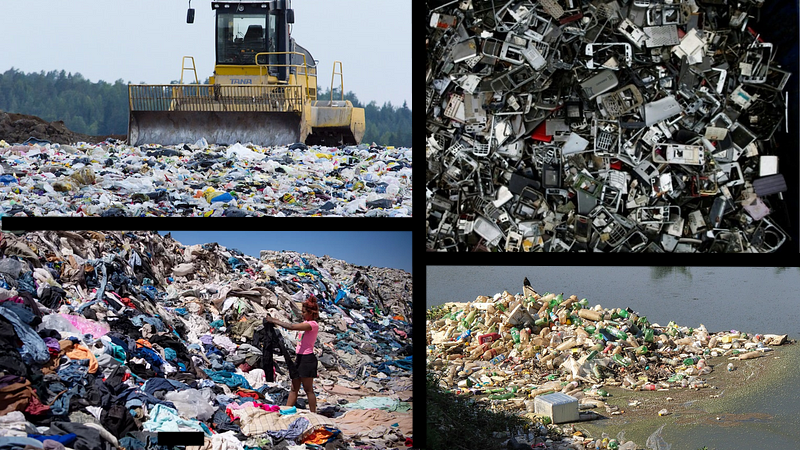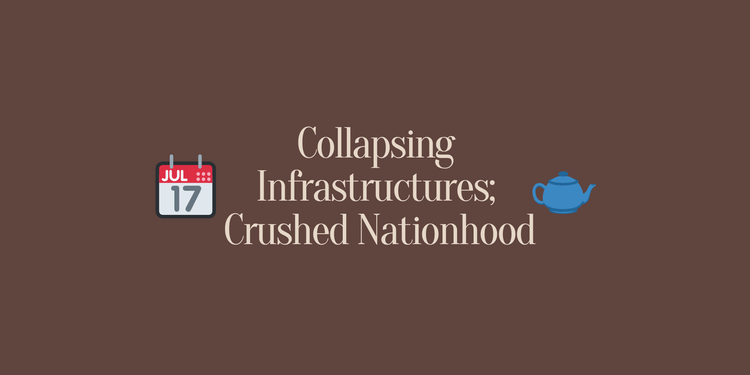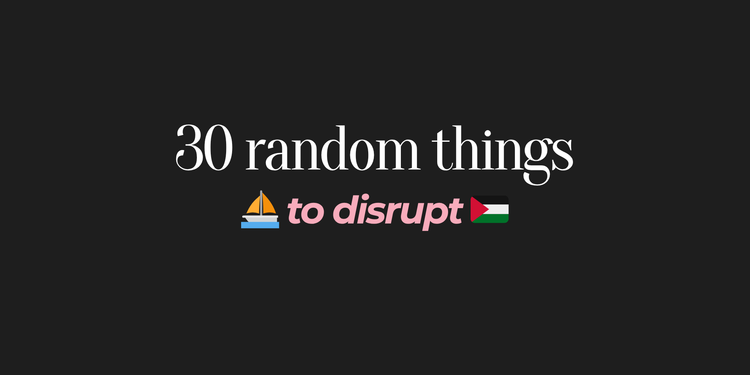✍🏼 Surviving Over-Consumerism

You need this! This is the BEST product ever! Save $50 with this dup!
You know that influencer accent when an enthusiastic content creator is introducing this AMAZING product.
Just one-click, you will be transported to the store. Another click takes you to the payment page. Within a few days, the item arrives at your door, often wrapped in a ridiculous amount of plastic packaging. 📦
In Hong Kong alone, 780 million pieces of packaging waste from online shopping was generated over the course of 2020, according to a recent study by the local group Green Sense. (Earth Org 2024).
Large quantities of stuff are advertised to us on an endless loop, convincing they will solve all our first-world inconveniences. Social media influencers and their aesthetic lifestyle are a curated facade of unattainable perfection. It is their job to influence their audience into buying sponsored products.
Life seems easier with a quick fix to every problem. Just one click, this thing will show up at your doorstep and resolve your headaches.
One-click will solve the problems we didn’t even realize we had! ✅
Products’ packaging contributes in large part to CO2 emissions from producing plastics, polluting ecosystems as well as adding enormous amounts of waste to our landfills. 3 billion trees are pulped yearly to produce 241 million tons of shipping cartons, the forest conservation group Canopy found… (Earth Org 2024)
Messy pantry?
🛍️ Buy colour coordinated aesthetic bins!
Not drinking enough water?
🛍️ Buy a cute new water jug in that brand!
A new fashion trend?
🛍️ Buy a whole new outfit for this micro-trend!
Shein, Temu, DHGate, AliExpress, Wish (the list goes on…), or your favourite influencer’s TikTok and Instagram-affiliated shops. The drop ship model enables these commodities to be offered at a low price. The turn to a consumption-driven approach should not come as a shock.
Intense consumerism serves as a great distraction, providing a quick dopamine hit, a momentary escape from feeling fatigue and exhaustion 🙈
Cheap price tags give a false sense of security, it won’t hurt your wallet and you could always file for a return. When these poorly made products inevitably break, it’s easy to toss them in the bin and buy a new one.
Behind these affordable “stuff” that are delivered straight to your door, there are transnational systems of labour and environmental exploitation.
From resource extraction and raw material processing to manufacturing and shipping, workers are paid close to nothing — if anything at all. Low-cost production contributes to the unsustainable depletion of our planet’s resources and permanently damages local environments and communities. And that’s just the beginning 🏔️
Bangladeshi factory owners and the Bangladeshi government rightly feared that if the minimum wage that workers were requesting were granted, fashion companies would take their business to other, lower-wage countries. (ReMake Fashion Accountability Report 2024)
Single use or broken products aren’t thrown away. Discarding an item in the global north is a privilege. Out of sight, out of mind. We stopped paying attention once the trash bags are collected by waste management workers, as though we immediately unlearned object permanence.
Ultimately, only 15% of used textiles are theoretically ‘recycled,’ and of those, up to half are simply shipped abroad to other countries, largely in the Global South where they land in landfills there. (Lundberg and Devoy 2022)
There are no good ways to discard garbage: burn it, bury it, or ship it to the global south. Regardless, the remnants of this stuff will persist years and decades, long after we are dead 🗑️🗑️🗑️🗑️🗑️
At the end of life, e-waste is often incinerated, disposed of in landfills, or exported to developing economies under the guise of recycling, reuse, or repurposing schemes — largely to countries that lack adequate labor, health, safety, and environmental laws. (Meidl 2023)
Many of us have fallen back on this mantra for surviving capitalism: There is no ethical consumption under capitalism.
After all, we cannot practice avoidance of buying products made through capitalistic exploitation since corporations won’t ever change their profit-maximization model… well… Does that mean we should not even try to challenge capitalism and overconsumption on our own terms? 🤷🏻♀️
Plastics are not made to be recycled, and their quality diminishes with each attempt. Recycling is also expensive, and requires huge amounts of infrastructure, equipment, water, and energy. (Plastic Pollution Coalition 2022)
Becoming mindful of consumption habits does not require a lifestyle overhaul. Everyone is capable to alter small habits to prolong the life-cycles of their possessions and reduce waste.
➡️ Here are some of my favourite practices ➡️
Overcoming perfection paralysis: Doing your best within your financial and social circumstances, but always demanding progress from corporations and governments.
The dearth of data and transparency on the types, generation rates, interstate movements, cross-border trade, and actual destinations and final fates of e-waste make it impossible to capture the full extent of the evolving e-waste crisis. It also detracts from our vision of sustainability and leaves societies unprepared for the demands of an equitable and just circular economy. (Meidl 2023)
Reuse, Repair, Repurpose
🔧 Learning to take care of my things: upkeep, maintain, and repair. Check out community initiatives like tool libraries and repair cafes that empower individuals needing extra support to fix their things.
Minimizing waste can be as simple as bringing a reusable bag, a water bottle, or utensils. If I have to buy something, I try to look through second-hand stores and listings before committing to buying new.
Support Local, Indigenous, Sustainable, Socially-Conscious Businesses
🛒 Supporting businesses that share my vision for an equitable and sustainable future; meanwhile also boycotting businesses that were known to exploit and abuse workers.
Buying local and seasonal is more climate conscious. Local grown food, that doesn’t have to travel, is picked near ripe giving it a more authentic and better flavour. Less time travelling means produce is fresher so vitamin and mineral content stays intact. (Climate Conscious Catering)
Research the Product/Business/Company
📚 Looking at their supply chains and labour practices, as well as sustainability practices. There are many resources that record the human rights and environmental impact of corporations that I am buying from. Seeking out products made with fair labour and fair trade practices.
Supply Chain: https://knowthechain.org/
Fashion: https://remake.world/accountability-report-2024/
When buying clothes, I try to look for plant-based and animal-derived fibres, avoiding petroleum-based synthetic fibers (polyester, acrylic, etc).
Understanding Fabric Types: https://letslearntosew.com/understanding-fabric-types-structure-use/
As consumers, it can feel overwhelming and powerless at times. I don’t want to dream of a future where labour is no longer defined by capitalistic profit — I want to live in it. 💭
Becoming conscious and informed consumers can help us align our spending with our vision of the future. In this capitalist economy, our dollars are no different than ballots.
Do you want your dollar to go towards multinational conglomerates that perpetuate wealth inequality; or support the development of socially conscious businesses that prioritize equity and sustainability?
—
📝 Reference List 📝
not endorsing any articles/organization/individuals below
Dielle Lundberg and Julia Devoy (2022) “The Aftermath of Fast Fashion”. Boston University, School of Public Health.
Rachel Meidl (2023). “Closing the Loop on the World’s Fastest-growing Waste Stream: Electronics”. Baker Institute, Center for Energy Studies.
https://www.bakerinstitute.org/research/closing-loop-worlds-fastest-growing-waste-stream-electronics
Let’s Learn to Sew (2018). “Fabric 101: Understanding Fabric Types, Structure and Use”. https://letslearntosew.com/understanding-fabric-types-structure-use/
Plastic Pollution Coalition (2022) “What Really Happens To Your Plastic ‘Recycling’ ”. https://www.plasticpollutioncoalition.org/blog/2022/5/16/what-really-happens-to-your-plastic-recycling
Climate Conscious Catering. “The Benefits of Buying Local and Seasonal”. https://sdg2advocacyhub.org/latest/the-benefits-of-buying-local-and-seasonal/
Earth Org (2024). “The Truth About Online Shopping and Its Environmental Impact”. https://earth.org/online-shopping-and-its-environmental-impact/



Comments ()